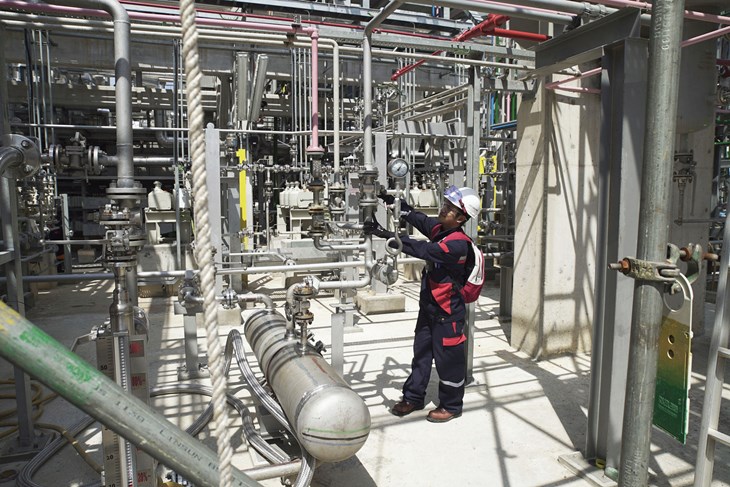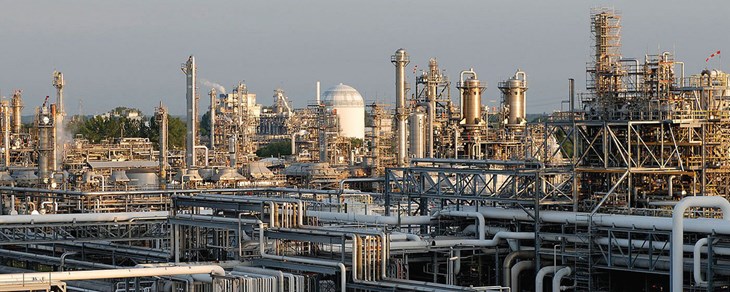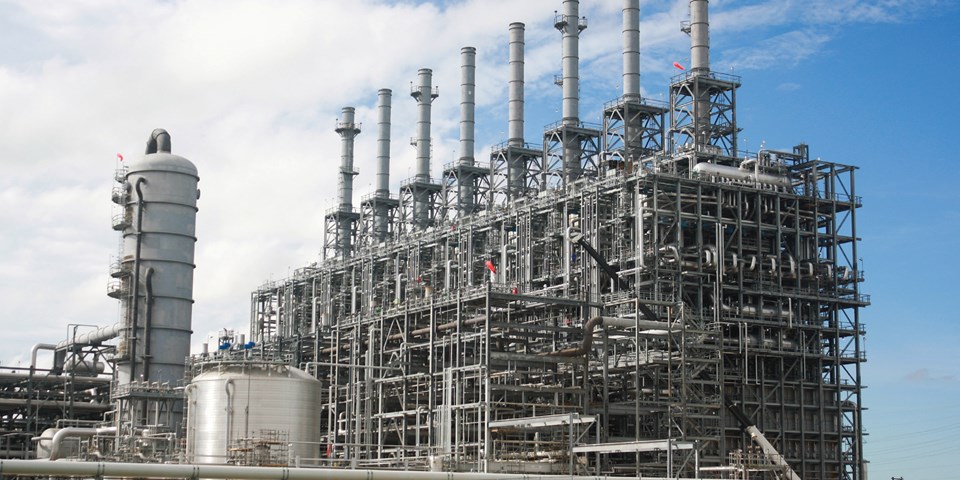Patrick began his journey as an engineer when he earned an undergraduate degree in Mechanical Engineering from Western University in London, Ontario, Canada, in 1983. After completing his Master of Engineering Science Degree, Patrick found a job in a Dow Chemical power plant. After 14 months of working at that plant, he transferred to the engineering department where he developed his skills as a project, pressure vessel, and piping engineer, and gained a Professional Engineer designation in the Province of Ontario.
In 1999, Patrick made his way to Dow Chemical’s engineering office in Houston where he focused on piping technology, and became a Leader for Valve Technology in the early 2000s. In his current role of ‘Global Improvement Leader for Piping Technology’, Patrick is involved with everything to do with piping: including work processes, designing components, stress analysis, and fire protection. “Part of my job with my team is to develop technical specifications for components such as commodity pipelines, fittings, valves; specialty components including hoses, parts of loading arms, and steam traps,” says Patrick.
Being in the chemical industry, he explains that the fluids being transferred are often potentially dangerous, and require the correct application of material to meet specifications. “It is a little different than the specifications required in the oil industry because they are typically dealing with hydrocarbon. In the chemical industry, we are not only dealing with hydrocarbon, but with all sorts of different chemicals at the same time,” Patrick states. “We used to be a chlorine-based company, and at that point in time, we were working with very corrosive fluids. With changes to our business, while we still have those corrosive materials, we are narrowing down the types of fluids used.”
Now that the company is dealing with fewer types of processes, the materials being used to manufacture the applications have changed as well. “We used to deal with a lot of titanium because our processes were heavy in chlorine, however that is something we do not utilize as much today. We are still using materials like zirconium, and glass line-piping, but not to the extent that we were. Now we are using more of the 300 series stainless steels, duplex stainless steel, alloy 20, and Hastelloy,” he states.
“We apply our pipe specs differently than many other companies because we manage them as ‘cradle-to-grave’ versus primarily for capital projects. This means they are structured a little differently, and that is why we have typically more individual pipe specs,” says Patrick. While many companies use an EPC’s class 150-carbon steel piping material spec, he explains that this is not the approach at Dow. “For our pipe specs, we want maintenance people to be able to apply specifications in the field, rather than calling in an engineer to interpret the application. Ours are much narrower in scope and require more detailed item descriptions.”

Exploring New Technologies
Technology has been progressing rapidly over the past 30 years and recently, industries such as oil and gas, chemical and petrochemical, and water and wastewater have been experiencing major changes as a result of these technological advancements. Many of these efforts have improved fugitive emissions performance in valves, pumps, and other equipment.
Reducing Fugitive Emissions
A recent advancement toward the reduction of fugitive emissions is the Magnetic Drive for actuated valves. “I believe I saw it for the first time at a past Valve World Conference or Fugitive Emissions Summit, and I thought that it looked really interesting,” Patrick recalls.
Currently, bellow seals is one method of reducing fugitive emissions on rising stem valves, such as gate and globe valves, by creating a positive mechanical seal of the valve cavity. “In fact, at one point in history the industry and regulators anticipated bellows were the solution to fugitive emissions,” Patrick comments. However, bellows fatigue and may crack over time. In only a few moments, a leak from a bellow will result in a loss of containment, which negates any value this technology provided in reducing fugitive emissions. “The Magnetic Drive is supposed to do the same job as a bellow, without that Achilles heel,” he continues. The component is a magnet on the valve’s lever, which allows the operation of the valve without physical perforation of the valve cavity. “Essentially, the valve is being moved by strong magnets.”
Laser Scanning and Photogrammetry
Dow Chemical has plenty of projects on the go, and Patrick explains that quite a few of them are exploring the use of technologies such as automation, RFID tags, laser scanning, and photogrammetry. “Laser scanning and photogrammetry are two different methods that use three-dimensional, as-built information, which help improve our designs,” he begins. “Laser scanning uses a laser to take measurements to develop an array of points, which form the point cloud of the as-is project location. Photogrammetry accomplishes the same, by utilizing triangulation. Through overlapping photographs of an area, algorithms are used to develop a point cloud.” This eliminates the need of an engineer or operator to be at the actual location to take measurements, and instead uses the point cloud data to take the measurements or visualize the current location.
“Current drone technology actually has both laser scan and photogrammetry capabilities; you can do many different measures in a short amount of time. From this, I can get a very accurate representation of what exactly is in the field. In fact, technology has come to the point where a photogrammetry or laser scan can be laid over top a photo of the location, and an individual can do a 3D walk-through of that plant. Dow has been one of the first in our industry to deploy drone technologies within our facilities.”
Once the laser scan or photogrammetry data is acquired, it does not have to sit dormant. “For example, if there is a pump that must be installed, and four valves that need isolation. I can have a mechanic, who may or may not have ever been to the plant before, walk through the procedure of identifying the shut off valves, and identifying where the piece of equipment is isolated in the office setting, before they actually go out in the field,” Patrick explains. “That way, the chances of them making a mistake in the field are much slimmer, because they have done it once in a safe environment. We are not exposing that individual to that plant’s environment until they have some awareness of the situation, and the plant.”
The development of this technology and data shall help companies in the chemical industry, with the ability to operate and maintain plants with increased safety. As the use of the technology has become more common, the cost to utilize this technology has dropped. “It was about 10 years ago that laser scanning was really introduced, and back then, it cost a fortune. However, it has significantly dropped in price in recent years, since it has become a more common tool,” Patrick states. “Photogrammetry is also picking up as it does not require complicated equipment in the field. I can go out in the field with a camera, take as many photos as I want, upload them to a program, and get a 3D rendering of my plant or area.”
RFID Tags
Radio frequency identification (RFID) tags, which are another up-and-coming technology, are also being used more in the chemical industry. RFID tags are a tracking system that use smart ‘barcodes’ in order to identify items. The RFID tags utilize radio frequency technology, and the radio waves transmit data from the tag to a reader. “RFID tags can be used for monitoring and maintaining the testing history of items such as pressure safety valves (PSVs). Simpler versions of RFD tags can be used to assist in the marshalling of fabricated spools for piping,” Patrick states. “With RFID tags, we have the ability to track the material, and ensure that it is making its way to the correct spot.” In these cases, Patrick explains that the use of RFID tags would be seen more at the front end of a project, where a PSV’s maintenance history would need to follow that piece of equipment throughout its use.

A Human Touch Amongst Digitalization
In any industry, a common concern of some is that digitalization will eliminate the need for human talent, however, Patrick believes that the industry requires the best of both worlds. “I think that having digitalization and connected services at our fingertips is highly beneficial, as you need to take into consideration the long-term cost of ownership. Right now, piping and piping components are not typically tracked in a plant,” Patrick explains. “They will do thickness checks and regular inspection, however, the historical maintenance history for a valve in a line would be difficult to evaluate. As this, and similar technologies’ costs drop and are adopted, we will have the ability to better practice predictive maintenance on our valves and piping systems.”
Currently, there are plenty of leak detection technologies available. “There are acoustic detection devices, infrared cameras and thermal imaging available to assist in monitoring leaks within an area, which therefore assists in determining when the valve began leaking. By tracking the history of the valve, the next period for the potential valve failure can be identified and pre-emptive maintenance can be scheduled,” Patrick states. “From my point of view, this technology will allow engineers to better make decisions, and we will run safer plants and keep people out of danger. We are at the beginning of a new generation, where engineers will have significantly more data to make informed decisions.”
For someone like Patrick, who experienced the industry without all of these types of technology, he believes that it will be the younger generation who will assist the veterans with learning how to use it. “New hires and new grads are digital natives, and I believe that when we get into this 3D, artificial environment, they are going to conceptualize much better than someone my age, who is trying to put on virtual reality (VR) goggles, and walk through the plant. We have already seen it with the new drafting tools we have brought in; the experienced employees try to get the tool to work the way the old tool did. Whereas, the newer hires get the tool to work the way it is designed to work. The new generation is just much more adaptable.”
The hands-on experience from the industry veterans is also crucial. Patrick recalls his first job in a power plant, “We had an automated control room, which consisted of a board with analog gages and pneumatic systems. There was a mature operator, and less experienced operator who would switch in and out every other day as the Control Room Lead,” he says. “If something went wrong with the automated system, the less experienced individual would panic; you could see the panic in his decision making. However, the veteran knew conceptually, what was happening in that plant because of the analog gages, and the same is true all-through. It is an awareness of what is happening. If you were to fly on a plane, you might feel a bit better seeing a more experienced pilot, just because they have been trained without the automation option, and can do everything manually.”

Bridging the Knowledge Gap
Knowing that it is important to transfer hands-on experience to those who are new to the industry, Patrick is someone who believes in doing everything possible to educate the new generation of engineers. “It is not going to be easy, because there is no way that the engineers coming in are going to gain the experience that would make up for all of the people retiring in the upcoming years; and there are plenty of people retiring,” Patrick states. “There is also no replacement for experience, however, education and knowledge can come close, and technical conferences and seminars are a great opportunity for new engineers, and others in the industry, to gain that knowledge.”
As the Chairman of Valve World Americas Conference 2017, and now a Steering Committee member of Valve World Americas Conference 2019, Patrick uses the conferences and exhibitions as a way to stay up-to-date with the technology that is being introduced to the industry, and is already teaching what he knows, to those he works with. “There is so much out there, the growth potential is amazing, compared to when I started out doing pipe specs,” Patrick comments.
With Dow being a big advocate of mentoring opportunities for less experienced engineers, Patrick has already assumed the role of a mentor, in order to prepare newcomers for the future. “A big portion of my job is to mentor new engineers within the company. With some, you can tell they really have a passion for learning about the technology, and some, it is just a gate they are going through to do something else. I find it most enjoyable when I’m working with someone who is passionate about what they are doing, and really wants to learn. I am eager to share my knowledge and learn through the process.”


